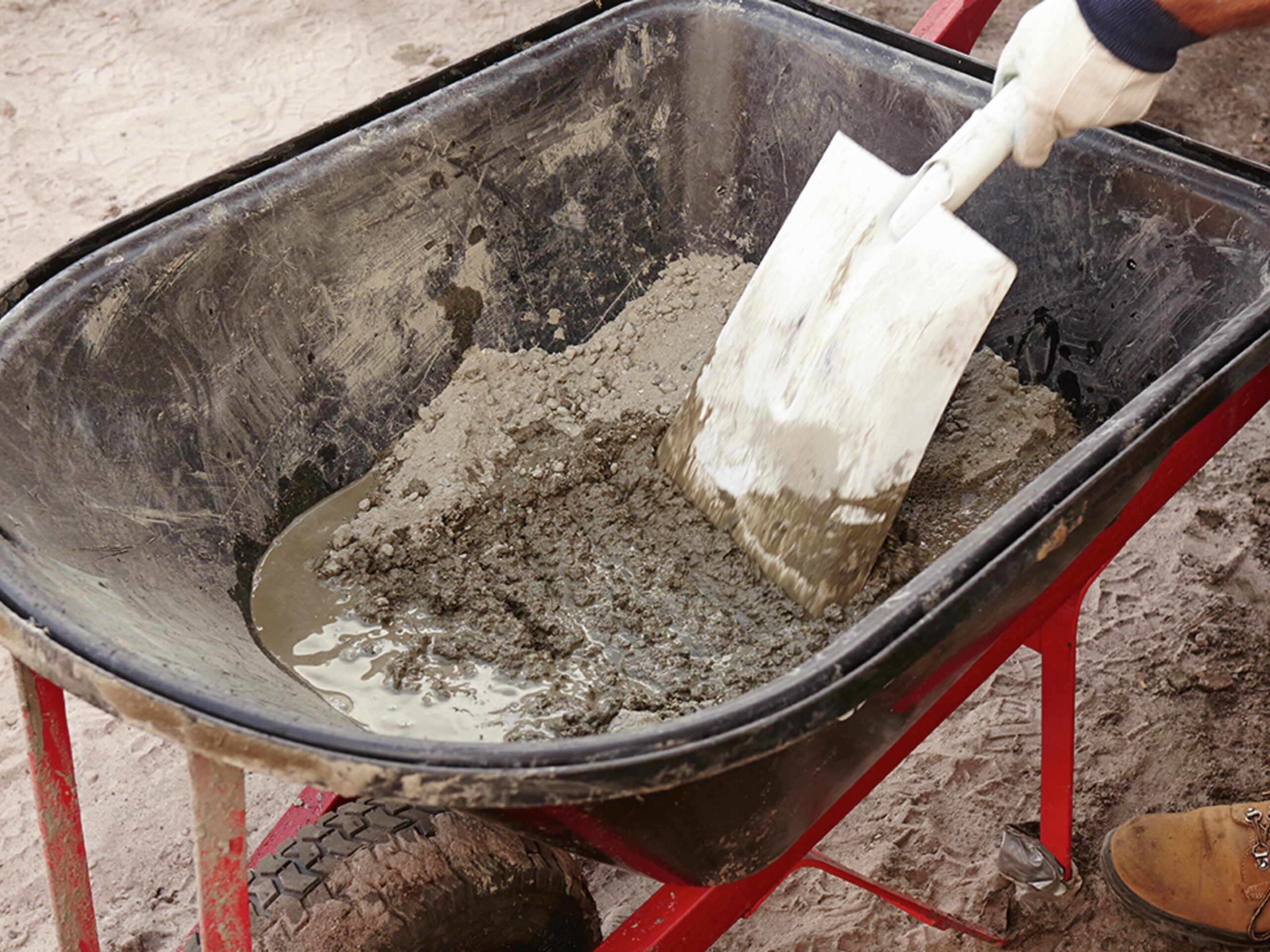
I. Introduction to Mixing Concrete in a Wheelbarrow
A. The Convenience and Versatility of Using a Wheelbarrow
Mixing concrete in a wheelbarrow offers a convenient and versatile solution for DIY enthusiasts and professionals alike. The portable nature of a wheelbarrow allows for easy transportation of materials to various locations, making it ideal for small to medium-sized projects.
B. Understanding the Basics of Concrete Mixing
Concrete mixing is a fundamental process that involves combining cement, aggregates, and water to form a cohesive mixture with the desired strength and consistency. Proper mixing techniques are essential for achieving uniformity and ensuring the structural integrity of the finished concrete.
C. Importance of Proper Mixing Techniques
Proper mixing techniques are crucial for producing high-quality concrete with the desired properties. Inadequate mixing can result in weak or inconsistent concrete mixes, leading to structural issues and compromised durability. Mastering the art of mixing concrete in a wheelbarrow requires attention to detail and adherence to established guidelines.
II. Tools and Materials Required
A. Essential Tools for Concrete Mixing
1. Wheelbarrow
A sturdy and well-maintained wheelbarrow serves as the primary vessel for mixing concrete. Choose a wheelbarrow of appropriate size and capacity to accommodate the volume of concrete needed for your project.
2. Shovel or Hoe
A shovel or hoe is used to mix and manipulate the concrete ingredients within the wheelbarrow. Opt for a durable and ergonomic tool that allows for efficient mixing and maneuverability.
3. Measuring Tools
Accurate measurement of concrete ingredients is essential for achieving consistent results. Utilize measuring tools such as buckets, cups, or scales to proportion the cement, aggregates, and water accurately.
B. Necessary Materials for Concrete Mixing
1. Portland Cement
Portland cement serves as the binding agent in concrete mixes, imparting strength and durability to the finished product. Choose high-quality Portland cement suited for your specific application and project requirements.
2. Aggregates (Sand, Gravel, or Crushed Stone)
Aggregates, such as sand, gravel, or crushed stone, provide bulk and volume to the concrete mixture, enhancing its workability and structural integrity. Select aggregates of appropriate size and gradation to achieve the desired concrete consistency and strength.
3. Water
Water is a critical component in concrete mixing, facilitating the hydration process and enabling the cement to bind with the aggregates. Use clean, potable water free from impurities for optimal concrete performance.
C. Optional Additives for Enhancing Concrete Properties
Depending on the specific requirements of your project, you may choose to incorporate optional additives such as admixtures, fibers, or pigments to enhance the performance or aesthetics of the concrete mixture. Consult with a professional or supplier to determine the suitability of additives for your application.
III. Step-by-Step Guide to Mixing Concrete in a Wheelbarrow
A. Preparing the Wheelbarrow
1. Clean and Dry the Wheelbarrow
Before mixing concrete, ensure that the wheelbarrow is clean, dry, and free from any debris or contaminants that may affect the quality of the mixture. Remove any remnants of previous concrete mixes or foreign materials to prevent contamination.
2. Ensure Proper Ventilation and Stability
Choose a well-ventilated and stable location for mixing concrete to minimize the risk of dust inhalation or accidents. Place the wheelbarrow on a level surface and ensure that it is stable and secure before proceeding with the mixing process.
B. Mixing the Concrete Ingredients
1. Measure and Add the Portland Cement
Begin by measuring the required amount of Portland cement according to the specifications of your concrete mix. Carefully add the cement to the wheelbarrow, distributing it evenly to facilitate thorough mixing.
2. Gradually Incorporate the Aggregates
Next, add the predetermined amount of aggregates, such as sand, gravel, or crushed stone, to the wheelbarrow. Gradually incorporate the aggregates into the cement, ensuring uniform distribution and avoiding clumping or segregation.
3. Adjusting the Water Content for Optimal Consistency
Once the cement and aggregates are combined, gradually add water to the mixture while continuously mixing with a shovel or hoe. Adjust the water content as needed to achieve the desired consistency and workability of the concrete.
C. Mixing and Homogenizing the Concrete Mixture
1. Use a Shovel or Hoe to Mix Thoroughly
Thoroughly mix the concrete ingredients using a shovel or hoe, ensuring that all components are evenly distributed and no dry pockets or clumps remain. Work methodically from the edges towards the center of the wheelbarrow to achieve uniformity.
2. Ensure Uniform Distribution of Ingredients
Continuously fold and turn the concrete mixture within the wheelbarrow to ensure uniform distribution of ingredients and minimize the risk of inconsistencies or weak spots in the finished concrete. Pay attention to the corners and bottom of the wheelbarrow to incorporate any stray materials.
3. Achieving the Desired Consistency
Monitor the consistency and workability of the concrete mixture as you mix, adding additional water or dry ingredients as needed to achieve the desired properties. The ideal concrete consistency should be pliable and cohesive, allowing for easy placement and manipulation.
IV. Tips and Techniques for Efficient Concrete Mixing
A. Maintaining Proper Proportions of Ingredients
1. Follow Recommended Ratios for Concrete Mixes
Adhere to the recommended ratios and proportions of cement, aggregates, and water specified for your concrete mix to ensure optimal performance and strength. Deviating from these ratios can result in weakened or compromised concrete.
2. Avoid Overloading the Wheelbarrow
Avoid overloading the wheelbarrow with excessive amounts of concrete mixture, as this can impede the mixing process and lead to uneven distribution of ingredients. Work in batches if necessary, mixing smaller quantities of concrete for better control and consistency.
B. Mixing in Batches for Large Projects
1. Divide the Concrete Mix into Manageable Portions
For large-scale projects or prolonged mixing sessions, consider dividing the concrete mix into manageable batches to facilitate efficient mixing and reduce the risk of fatigue or errors. Mix each batch thoroughly before proceeding to the next.
2. Mix Each Batch Consistently for Uniform Results
Maintain consistency in mixing techniques and proportions across all batches to ensure uniformity and compatibility between different sections of the project. Label each batch accordingly to track its composition and application.
C. Monitoring and Adjusting the Mixing Process
1. Regularly Check the Consistency and Workability of the Concrete
Periodically assess the consistency and workability of the concrete mixture throughout the mixing process, making adjustments as needed to achieve the desired properties. Avoid excessive water addition, as it can weaken the concrete and compromise its strength.
2. Make Necessary Adjustments to Achieve the Desired Results
Be prepared to make adjustments to the mixing process based on factors such as ambient temperature, humidity levels, and material characteristics. Fine-tune the water content, mixing duration, and technique to optimize the performance and quality of the concrete mix.
V. Conclusion: Achieving Quality Concrete Mixes with a Wheelbarrow
In conclusion, mastering the art of mixing concrete in a wheelbarrow requires attention to detail, proper technique, and adherence to established guidelines. By following the step-by-step guide and implementing tips and techniques for efficient concrete mixing, DIY enthusiasts and professionals alike can achieve high-quality concrete mixes suitable for a wide range of applications. With the right tools, materials, and know-how, mixing concrete in a wheelbarrow can be a rewarding and satisfying endeavor, yielding durable and structurally sound results.


